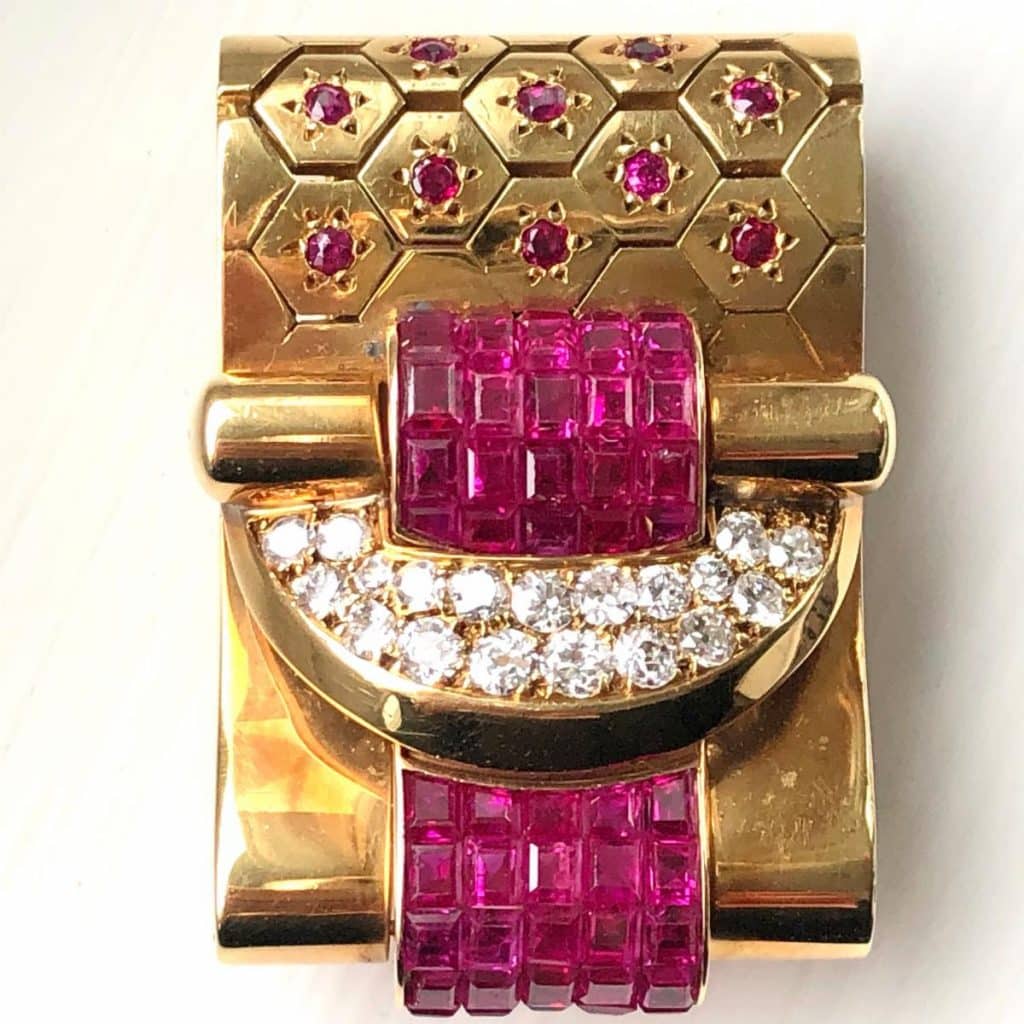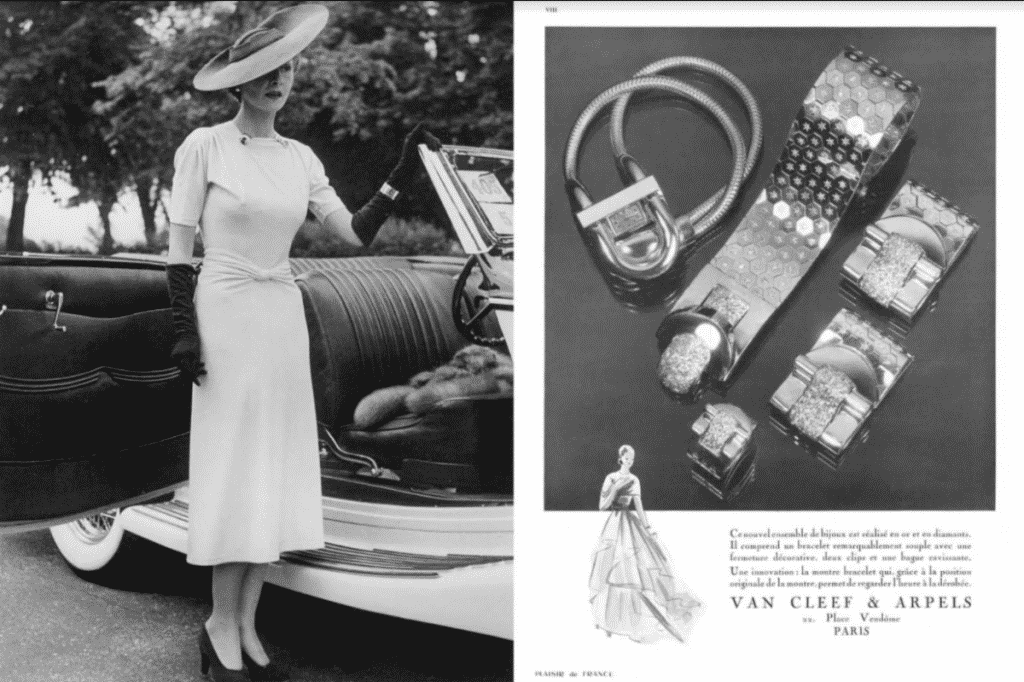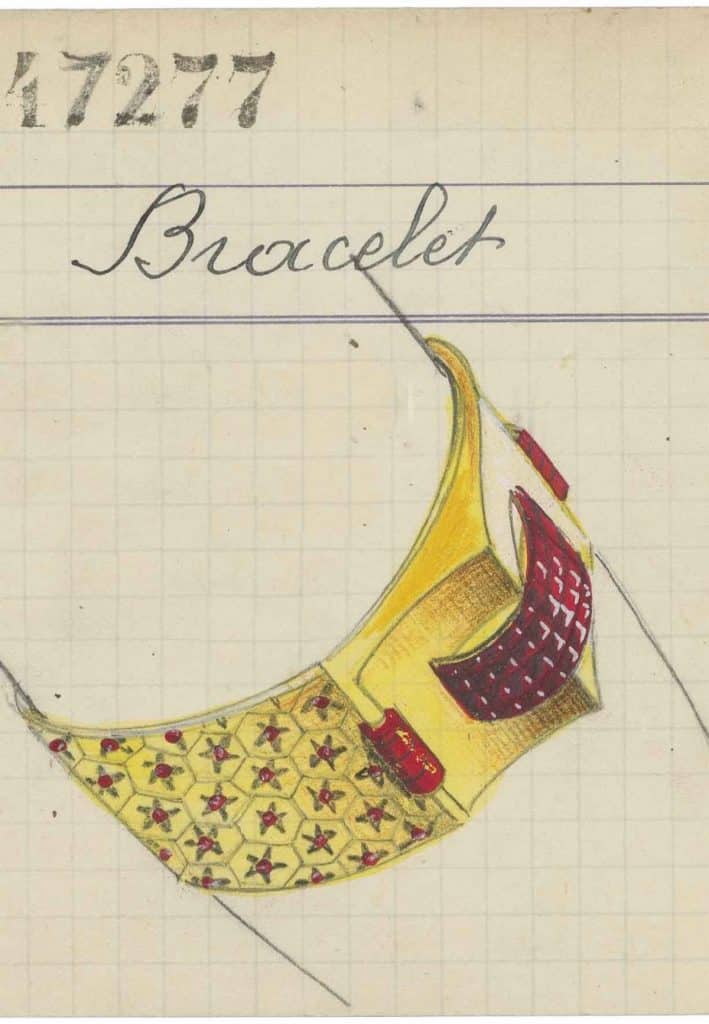19 Jan Ode to Ludo
![]()
An exciting piece of what we do is sleuthing. We have worked with the Van Cleef and Arpels “Ludo Hexagone” series in the form of bracelets and earrings but this brooch is a new and exciting iteration. As we research, we’d like to share some information.

Louis Arpels:
The Ludo Hexagone is named for Louis Arpels, of the House of Van Cleef and Arpels, whose nickname was “Ludo”. He has been described as a ‘marketing genius’. In 1933, he married Hélène Ostrowska, a model for the House of Worth. Hélène became a muse for the house and she was featured on the International Best-Dressed Hall of Fame List for many years. She was often photographed wearing long black gloves with the Ludo Hexagone bracelet over them, starting a fashion trend.

The Design:
The Ludo Hexagone design was created in 1934. The pin we received dates from the late 1930s and we will confirm this with the Van Cleef archives as we know the original purchaser. The Arpels maintained their store in Paris but Louis and Helene moved to the USA in 1940, fleeing the Nazis, and opened a boutique in New York City which became an instant success.
At its heart, a Ludo consists of a wide flexible band composed of numerous interlocking gold (or sometimes platinum) links. And although the Ludo Hexagone may appear more emblematic of the two, it was the Ludo Briquettes bracelet which debuted first in 1934.

As the names suggests, the rectangular links of the Ludo Briquettes bracelet are arranged in a brick-like pattern, while the Ludo Hexagone features an à ruche (beehive) pattern made up of a mosaic of hexagonal tiles, as in a honeycomb. The Ludo Hexagone arrived on the scene one year after the Ludo Briquettes. A precious stone (diamond, ruby, sapphire) would be set at the center of each hexagon in “serti étoilé” (star setting).

As for the stylized belt buckle-like clasps, many variations exist, with the grandest examples featuring a raised à pont motif with rubies or sapphires in Mystery Setting, another brilliant innovation of that period. The Ludo was made most often in yellow gold, but platinum models were made as well. This disparity accurately reflects the time period during which the Ludo was born, i.e. the middle of the 1930s, when gold came roaring back into fashion. Shortly afterwards, platinum was earmarked for the war effort and its shortage heralded the eventual supremacy of gold in jewelry design.

The Ludo mainly appeared in the form of bracelets and watches, but the motif was also applied to rings, earrings and brooches. Its immediate success ensured continual production all the way till the end of the forties. As testament to its importance in the history of the Maison, several examples can be found today in the Van Cleef & Arpels Collection. In 2019, Van Cleef & Arpels relaunched the Ludo in both the briquette and hexagon patterns. An enduring style symbolic of modern elegance.
Call the DKF Personal Assistant
(917) 841-8405
to order or for further details

